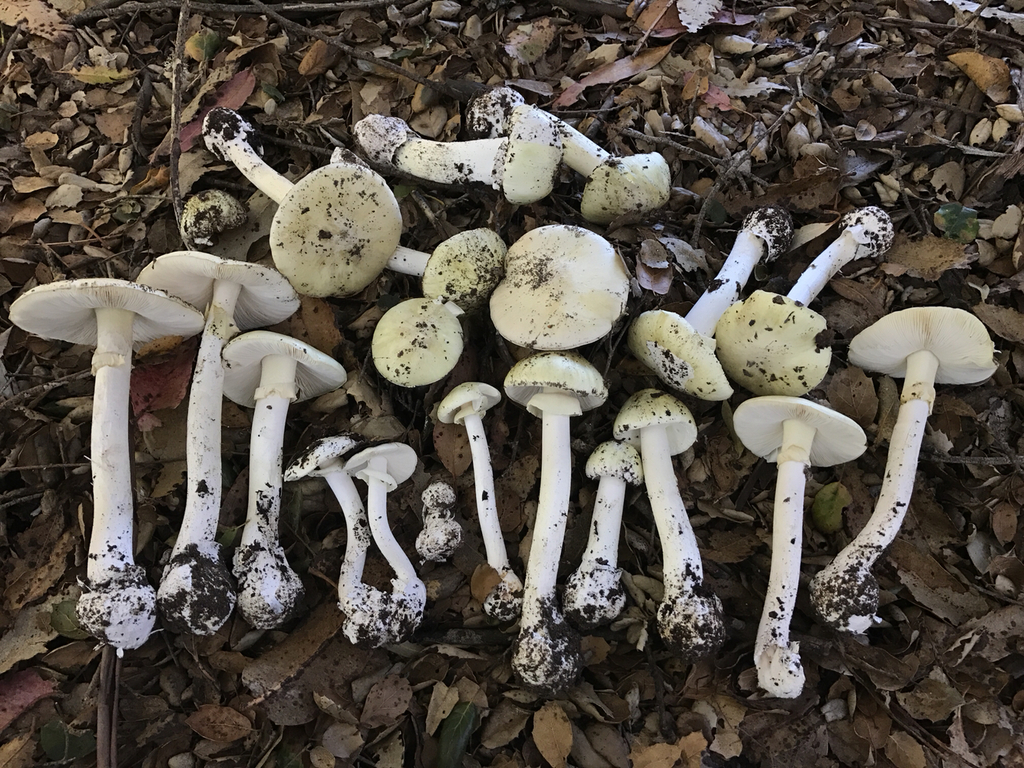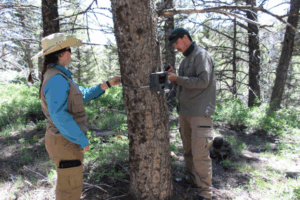There are many poisonous mushrooms.
Some are easy to identify, like fly agarics, which can cause nausea, hallucinations and several other horrible symptoms. Others, like destroying angels, are the same whites, yellows and browns as the edible mushrooms you can buy at a supermarket.
But none are more dangerous than Amanita phalloides, better known as the death cap.
CAP-TIVATING ORIGINS
Death caps are fairly common in their native Europe where they can be found at the base of many hardwood trees and some conifers, though they mostly prefer oaks.
It was through the importation of these hardwoods that death caps found their way into Australia, where they’ve only ever been spotted under exotic trees. However, death caps have been reported growing under eucalyptus trees in Algeria and Tanzania.
Caption: From left to right; fly agaric, young destroying angels, death caps
Credit: From left to right; Tony Wills, 2009 CC BY-SA 3.0; William Rafti, 2005 CC0; Archenzo, 2005 CC BY-SA 3.0
AN IM-SPORE-TANT SPECIES
They are the deadliest mushroom in the world, with 90% of fatal mushroom poisonings attributed to death caps.
But death caps aren’t considered invasive because they don’t harm their environment. It would actually be a detriment to the death cap if they did, because it has a symbiotic relationship with its host tree.
The tree provides some of the sugars it creates using photosynthesis to the death caps. In return, the death caps draw water and mineral nutrients from the soil and supply it to the tree.
This specific type of symbiotic relationship is called mycorrhiza and is common between many plants and fungi.
As well as their mycorrhizal relationship, death caps are often filled with insect larvae, making them a very valuable part of their ecosystem. Unfortunately, any animal with a liver cannot share those benefits.

Credit: Illustration by Michael Rothman
A HU-FUNGUS HAZARD
The main toxin in death caps is called α-Amanitin (pronounced alpha-Amanitin), which affects the liver and kidneys.
It can take up to a day for the symptoms – cramps, diarrhoea and vomiting – of death cap poisoning to appear.
Those symptoms pass after a while, which can be misinterpreted as a sign of recovery. But if untreated, the toxin goes on to cause total liver and kidney failure, which kills 10–30% of people who ingest death caps.
This was the tragic experience of Erin Patterson’s dinner guests in July 2023.
For everyone else, the best way to avoid mushroom poisoning is to avoid eating any foraged fungus unless you’re absolutely certain of its species.









